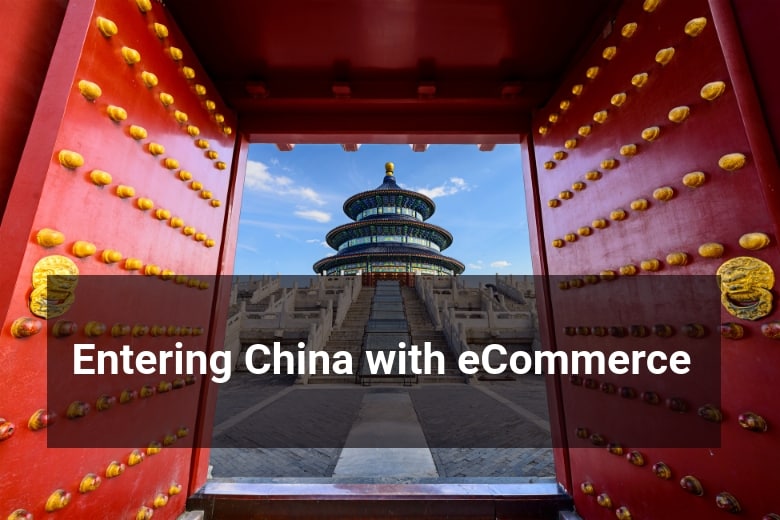The Chinese market is an 800 lb. gorilla which many businesses can’t ignore. China has set the bar for global retail commerce, with GDP and consumer confidence index growing at 6.8% and 114 points, respectively, at the end of 2017 (according to China’s National Bureau of Statistics). Demand is expected to stay steady and Chinese consumers are expected to spend more than ever, including the roughly 400 million millennial consumers with an increasing purchasing power.
China’s eCommerce market continues to see double-digit growth year-on-year. According to Goldman Sachs Research, the density of China’s population is a key driver of the noteworthy supply chain networks, making China the world’s largest eCommerce market. The online retail segment is projected to reach $2 trillion by 2020, growing from 17% of total retail sales in 2017 to 25% by 2020. In terms of foreign investment, eCommerce is enabling foreign businesses to enter China more quickly and easily.
The Challenges
However attractive the Chinese market may be to foreign businesses, the complexities involved in entering China should not be taken lightly. China is a fiercely competitive market. It is saturated with many product choices. Consumers are surrounded by constant innovation, driving short attention spans. Western foreign businesses can leverage China’s growing eCommerce as an easier, lower-risk entry strategy, versus opening a physical location. Supporting that, 52% of Chinese consumers shop from their smartphone on a daily or weekly basis, compared to only 14% globally. However, a deficient understanding of the Chinese commerce environment and culture has led to many failures.
It was suggested at the 2013 Australia-China Business Week conference that 48% of foreign businesses fail in China within two years. According to Oscar Ramos, Program Director at the Chinaccelerator in Shanghai, “Ninety-nine percent of companies who want to access China as a foreign company, shouldn’t” because their business and brand is not suited to survive the local competition and consumer expectations. Ramos’ Chinaccelerator works to help startups seeking to enter China. However, many of the biggest failures in China belong to highly experienced and successful businesses like the Fortune 500 companies: eBay, Google, Mattel, and Home Depot.
Case studies
Mattel (Barbie) entered China by setting up a $30 million flagship store, “House of Barbie,” in Shanghai, only to shut it down two years later. The key driver of Mattel’s failure was attributed to Mattel not establishing the Barbie brand before setting up a store. Barbie had no cultural significance to China and, therefore, consumers were not willing to spend money on the products.
Home Depot entered China by an acquisition of a local company with an established presence and brand (Home Way, located in Shanghai). It continued its entrance strategy by opening six more locations. Within six years, all seven stores were closed. One of the driving forces in Home Depot’s failure in China was the disconnect between local culture and the culture Home Depot was selling. Home Depot sells a do-it-yourself (DIY) culture, but China consists of a do-it-for-me culture, driven by cheap labor.
eBay entered China after buying a local company (Eachnet) and shut down two years after. Taobao, the world’s largest eCommerce online shopping website, owned by Alibaba Group, took the controlling share of the market. eBay’s failure was attributed to the company having no way of connecting the social channels that Chinese consumers thrive on. Taobao, on the other hand, had a chat platform that sellers and buyers could use to connect on a personal level.
Chinese eCommerce Platforms
eCommerce continues to challenge the role of physical stores in China and Alibaba Group is at the forefront. Tmall, which is a Chinese-language website for business-to-consumer (B2C) online retail is operated by Alibaba Group. 24% of Chinese consumers say they shop less often at brick and mortar locations as a direct result of Tmall. Retailers have experimented with online-to-offline (O2O) marketing to drive consumers into physical stores, but the results have shown more challenges than successes. Return on investment is hard to track and costs increase. Stressing the scale of digital consumerism in China, Alibaba’s eCommerce festivals, which are used as a B2C marketing strategy, are advertised by Hollywood-scale trailers. The Tmall platform dominates B2C eCommerce in China, with a 53% market share, and PwC Total Retail survey data shows that”https://www.pwccn.com/en/retail-and-consumer/publications/total-retail-2017-china/total-retail-survey-2017-china-cut.pdf” 97% of online shoppers use the platform.
The most advantageous eCommerce channels which can be used to enter China, such as Tmall, Taobao, and WeChat are important to leverage, coupled with a deep cultural understanding of what Chinese consumers want. Connecting eCommerce with social media has shown to be of the highest importance. In China, social media is used for brand and product discovery (45% of Chinese consumer confirm), posting reviews (54%) and even purchasing directly through the social channel (25%). It is critical to build a social presence. According to PwC, surveys indicate that social engagement is invaluable, with 79% of Chinese consumers confirming that positive interactions with a brand on social media drives them to endorse and 71% spend more money on the brand, as a result.
Conclusion
Entering and doing business in China is inevitably easier and more likely to be successful via eCommerce channels. They are less culturally sensitive than a brick-and-mortar-store strategy which, history has proven, led to numerous failures for foreign companies. Entering China could become less risky when partnering with a local company, but this also adds its own headaches such as conflicts of interest in services offered by partners and promotional campaigns.
eCommerce channels provide the most likely route to a successful entry for foreign businesses in China. A strong social and cultural understanding of Chinese consumers, coupled with a steady and reliable supply chain network can position your business for success.
Shipping
Next challenge would be, exporting your goods to China and getting them to your Chinese customers. Floship can help you with that. We specialize in eCommerce Order Fulfillment and offer a Total China Solution. With us, you do not have to worry about language barriers, difficult paperwork, regulations, Marketing and other concerns you may have. We will help you with that. For more information, click here.

Ready To Upgrade Your Logistic Solution?
Speak to Floship ecommerce logistic consultant about improving your global support chain today





